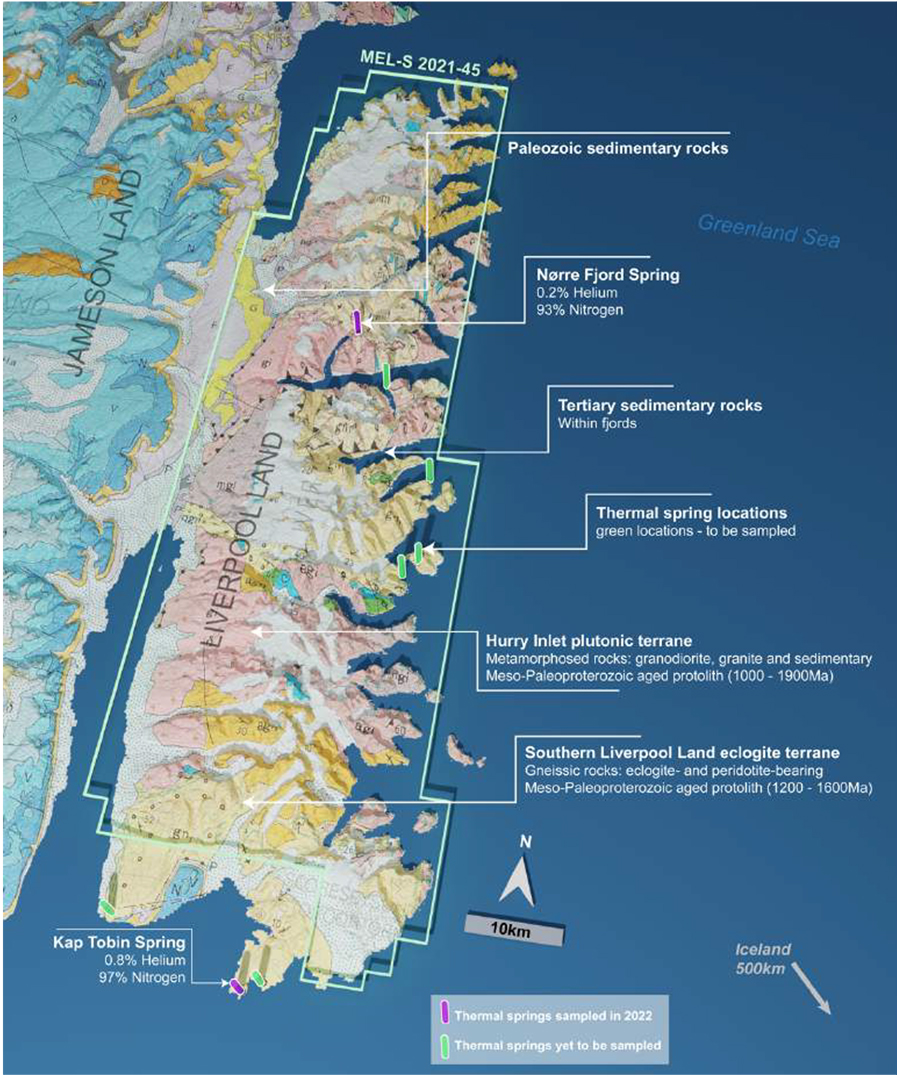Pulsar Helium‘s 100% owned Tunu Project is optimising the rich reserves of helium in Greenland to reinforce vital supply chains.
Helium is essential in a range of technologies we rely on daily, most notably for the medical industry, in which helium is used for Magnetic Resonance Imaging (MRI) scans, cryogenics, and other imaging techniques used to identify severe conditions like cancer and heart disease.
Additionally, helium is also critical for the automotive, aerospace, and computing industries, as it is vital in semiconductors, leak detection, welding, testing, and airbags.
Due to recent global helium shortages, the European Union added helium to its list of critical raw materials in 2023 – highlighting the urgency to identify significant and reliable helium resources to ensure robust supply chains.
Pulsar Helium is uniquely positioned to answer the call to the growing global demand for helium, with the company possessing the only license that provides exclusive rights for exploring helium in Greenland, the location of its exciting Tunu Project.
The Tunu Project’s optimal location for European and US supply chains
The Tunu Project is predominantly situated across Liverpool Land, East Greenland, spanning the eastern coastal regions and the inland areas north of Kangertitivaq – the most extensive fjord system globally.
The project affords year-round access via Nerlerit Inaat (CNP) airport, located 5km to the west and seasonal access by vessel, with the Ittoqqortoormiit settlement located 5km to the south, which can be reached by helicopter, boat, or snowmobile.
Due to its location on the east coast of Greenland, the Tunu project is Europe-facing, making shipping a viable route for exporting helium. It takes just four days to ship from the project to Aarhus, Denmark, and only nine days to ship to Virginia, US.
Ideal geology for natural resource exploration
The Tunu Project envelops most of the Liverpool Land Basement High (LLBH), mainly comprised of Proterozoic metamorphic and igneous rocks. The LLBH is an outcropping basement high flanked by the Jameson Land Basin to the west and the Liverpool Land Basin to the east.
Basement highs are promising for natural resource exploration as they can influence migration and entrapment of economic energy or mineral-rich fluids, like helium. Moreover, fracture systems in the basement highs and areas of younger sediment onlap are vital for migrating and potentially trapping gases.
The Tunu project boasts all of the essential geological components indicative of storing helium and hydrogen. These include:
- Ideal source rocks in ancient, metamorphic, and igneous basement;
- Mechanisms and pathways for the liberation and migration of gases;
- A mantle plume heat source to facilitate deep gas liberation and migration;
- Suitable geological conditions for reservoirs, traps, and seals; and
- Thermal springs that are surface manifestations of liberated deep, helium-rich fluids from source rock parent minerals.

How is Pulsar identifying the project’s resource potential?
Pulsar’s leading geochemistry team performed a field expedition at the Tunu Project in August 2022, collecting geothermal spring samples to investigate reports of noble gas-rich thermal springs in the region in 1926.
The geochemists sampled the Kap Tobin springs in the south and the Nørre Fjord springs in the central regions of Liverpool Land. The acquired gas samples were examined at the Woods Hole Oceanographic Institution and the University of New Mexico laboratories.
The sample from Kap Tobin yielded the highest helium content (0.82%), with the Nørre Fjord sample displaying helium content of up to 0.19%. The main gas in the samples was nitrogen (93-97%), with small amounts of argon and oxygen.
These high helium concentrations and helium isotope ratios correspond with buildup in Proterozoic and Archean rocks, followed by a release caused by rifting or interaction with a mantle plume.
To understand the landscape of the Tunu Project further, Pulsar has also acquired past geophysical surveys performed over the project’s area. These include:
- Onshore 2D seismic surveys by ARCO. These involved 1,799 line km of surveying in Jameson Land from 1985 to 1989. This information is critical for understanding the project area’s stratigraphy, potential gas trap locations, and gas migration pathways;
- Airborne geophysical surveys of Liverpool Land’s western section that were conducted in 2013. Surveys included a gradient magnetic survey by Fugro and magnetic and TDEM surveys by SkyTEM;
- Borehole logs and geochemical assays from an eight-hole programme in 2013;
- Historical and recent gas geochemistry; and
- Satellite multi-spectral interpretation from 2022.
Future Tunu Project outlook
Through the company’s subsidiary, Skyfire Ltd., Pulsar was granted a Special Mineral Exploration Licence in 2021 (MEL-S 2021-45). This license has an area of 2,772 km2, covering Liverpool Land and providing exclusive rights to Pulsar for all mineral resources, such as helium and hydrogen, but not hydrocarbons and radioactive elements.
With the demand for helium forecasted to skyrocket in the coming years and countries scrambling to identify supply chains, Pulsar’s Tunu project holds the potential to satisfy this ever-growing demand.









